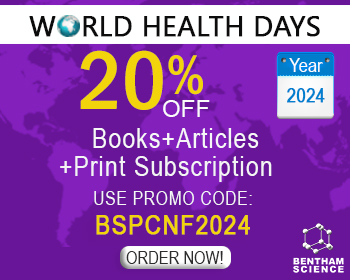Abstract
Nanoscience becomes one of the most cutting-edge research directions in recent years since it is gradually matured from basic to applied science. Nanoparticles (NPs) and nanomaterials (NMs) play important roles in various aspects of biomedicine science, and their influences on the environment have caused a whole range of uncertainties which require extensive attention. Due to the quantitative and dynamic information provided for human proteome, mass spectrometry (MS)-based quantitative proteomic technique has been a powerful tool for nanomedicine study. In this article, recent trends of progress and development in the nanomedicine of proteomics were discussed from quantification techniques and publicly available resources or tools. First, a variety of popular protein quantification techniques including labeling and label-free strategies applied to nanomedicine studies are overviewed and systematically discussed. Then, numerous protein profiling tools for data processing and postbiological statistical analysis and publicly available data repositories for providing enrichment MS raw data information sources are also discussed.
Keywords: Nanoproteomics, nanomaterials, nanomedicine, protein quantification, mass spectrometry, biomedicine science.
[http://dx.doi.org/10.1080/00498254.2016.1205762] [PMID: 27414072]
[http://dx.doi.org/10.1186/1477-3155-9-43] [PMID: 21943321]
[http://dx.doi.org/10.1016/j.aca.2016.06.012] [PMID: 27543013]
[http://dx.doi.org/10.1080/10590501.2014.907462] [PMID: 24875443]
[http://dx.doi.org/10.1039/C8CP01841C] [PMID: 29901061]
[http://dx.doi.org/10.1002/smll.201201492] [PMID: 23341247]
[http://dx.doi.org/10.1166/jbn.2014.1936] [PMID: 25992420]
[http://dx.doi.org/10.3389/fphar.2018.01397] [PMID: 30555328]
[http://dx.doi.org/10.1007/s00441-018-2928-5] [PMID: 30302547]
[PMID: 23407847]
[http://dx.doi.org/10.1016/j.nano.2005.03.002] [PMID: 17292064]
[http://dx.doi.org/10.1517/17425241003777010] [PMID: 20408736]
[http://dx.doi.org/10.1021/ja908117a] [PMID: 20225865]
[http://dx.doi.org/10.1007/s12013-018-0863-4] [PMID: 30570696]
[http://dx.doi.org/10.1016/j.nano.2014.08.012] [PMID: 25200613]
[http://dx.doi.org/10.1021/acscentsci.8b00444] [PMID: 30555899]
[http://dx.doi.org/10.1016/j.addr.2012.06.015] [PMID: 22820526]
[http://dx.doi.org/10.1016/j.jprot.2013.04.014] [PMID: 23619387]
[http://dx.doi.org/10.1002/anie.200802585] [PMID: 19142939]
[http://dx.doi.org/10.1021/acs.analchem.6b01412] [PMID: 27248155]
[http://dx.doi.org/10.1186/s12918-018-0563-0] [PMID: 29745857]
[http://dx.doi.org/10.1016/j.biomaterials.2006.08.049] [PMID: 21898921]
[http://dx.doi.org/10.2174/1381612824666181106094133] [PMID: 30398106]
[http://dx.doi.org/10.1016/j.jprot.2011.04.027] [PMID: 21596164]
[http://dx.doi.org/10.1208/s12248-010-9211-3] [PMID: 20549403]
[http://dx.doi.org/10.3109/10717544.2015.1101792] [PMID: 26530693]
[http://dx.doi.org/10.1155/2017/6541729] [PMID: 28539706]
[http://dx.doi.org/10.1016/j.ecoenv.2014.07.013] [PMID: 25124680]
[http://dx.doi.org/10.1016/j.ecoenv.2013.10.009] [PMID: 24290895]
[http://dx.doi.org/10.1002/smll.201303947] [PMID: 25303765]
[http://dx.doi.org/10.1038/nprot.2014.065] [PMID: 24743420]
[http://dx.doi.org/10.1016/j.bbapap.2016.08.009] [PMID: 27530299]
[http://dx.doi.org/10.1038/ismej.2008.108] [PMID: 18971961]
[http://dx.doi.org/10.1021/pr200748h] [PMID: 22188275]
[http://dx.doi.org/10.1371/journal.pone.0114390] [PMID: 25470785]
[http://dx.doi.org/10.1002/rcm.6866] [PMID: 24623703]
[http://dx.doi.org/10.1016/j.freeradbiomed.2013.01.021] [PMID: 23376233]
[http://dx.doi.org/10.1002/pmic.200500920] [PMID: 16858736]
[http://dx.doi.org/10.1038/13690] [PMID: 10504701]
[http://dx.doi.org/10.1504/IJNT.2008.016550]
[http://dx.doi.org/10.1021/ac0262560] [PMID: 12713048]
[http://dx.doi.org/10.1021/ac202243r] [PMID: 22103715]
[http://dx.doi.org/10.1021/ac300197c] [PMID: 22455665]
[http://dx.doi.org/10.1021/acs.analchem.6b01067] [PMID: 27377715]
[http://dx.doi.org/10.1021/ac203248s] [PMID: 22304650]
[http://dx.doi.org/10.1021/pr500754j] [PMID: 25152327]
[http://dx.doi.org/10.1371/journal.pone.0100492] [PMID: 24949634]
[http://dx.doi.org/10.3109/1354750X.2013.810667] [PMID: 23937207]
[http://dx.doi.org/10.1038/srep17559] [PMID: 26691006]
[http://dx.doi.org/10.1093/jxb/erj168] [PMID: 16574745]
[PMID: 26251593]
[http://dx.doi.org/10.1186/1471-2164-6-145] [PMID: 16242023]
[http://dx.doi.org/10.1074/mcp.M200025-MCP200] [PMID: 12118079]
[http://dx.doi.org/10.1007/978-3-319-06068-2_5] [PMID: 24952180]
[http://dx.doi.org/10.1074/mcp.M700152-MCP200] [PMID: 17627934]
[http://dx.doi.org/10.1016/j.bbagen.2017.07.022] [PMID: 28757337]
[http://dx.doi.org/10.1021/ac203460b] [PMID: 22659083]
[http://dx.doi.org/10.1002/jms.3954] [PMID: 28577300]
[http://dx.doi.org/10.1002/jssc.201200830] [PMID: 23212829]
[http://dx.doi.org/10.1016/j.celrep.2016.06.086] [PMID: 27477282]
[http://dx.doi.org/10.1038/nprot.2011.382] [PMID: 21959240]
[PMID: 23667905]
[http://dx.doi.org/10.1038/nbt.1611] [PMID: 20208520]
[http://dx.doi.org/10.1016/j.aca.2015.04.039] [PMID: 26231892]
[http://dx.doi.org/10.1088/0026-1394/37/3/3]
[http://dx.doi.org/10.1016/j.chroma.2016.09.028] [PMID: 27663727]
[PMID: 11337520]
[http://dx.doi.org/10.1002/anie.200800222] [PMID: 18988199]
[http://dx.doi.org/10.1021/bc700195y] [PMID: 18030993]
[http://dx.doi.org/10.1016/S0168-3659(99)00063-2] [PMID: 10370176]
[http://dx.doi.org/10.1038/nbt0202-163] [PMID: 11821862]
[http://dx.doi.org/10.1016/S0958-1669(02)00018-6] [PMID: 12566010]
[http://dx.doi.org/10.1021/ac026468x] [PMID: 14674459]
[http://dx.doi.org/10.1021/pr060161n] [PMID: 16944946]
[http://dx.doi.org/10.2174/1381612824666181102125638] [PMID: 30387388]
[http://dx.doi.org/10.1093/bib/bby127] [PMID: 30649171]
[http://dx.doi.org/10.1002/pmic.201000553] [PMID: 21243637]
[http://dx.doi.org/10.1586/epr.09.107] [PMID: 20377391]
[http://dx.doi.org/10.1002/rcm.4476] [PMID: 20213632]
[http://dx.doi.org/10.1093/nar/gkx449] [PMID: 28525573]
[http://dx.doi.org/10.1021/ac0498563] [PMID: 15253663]
[http://dx.doi.org/10.1016/j.tiv.2018.03.015] [PMID: 29626626]
[http://dx.doi.org/10.1021/ac403974n] [PMID: 24460183]
[http://dx.doi.org/10.1016/j.jprot.2015.08.010] [PMID: 26306862]
[http://dx.doi.org/10.1371/journal.pone.0129008] [PMID: 26444829]
[http://dx.doi.org/10.1021/pr401264n] [PMID: 24766612]
[http://dx.doi.org/10.1186/1471-2105-13-S16-S5] [PMID: 23176322]
[http://dx.doi.org/10.1074/mcp.R500005-MCP200] [PMID: 15741312]
[http://dx.doi.org/10.1039/C7CP07869B] [PMID: 29451287]
[http://dx.doi.org/10.1002/pmic.201100078] [PMID: 22038874]
[http://dx.doi.org/10.1021/ac502439y] [PMID: 25692814]
[http://dx.doi.org/10.1021/pr050300l] [PMID: 16457593]
[http://dx.doi.org/10.1074/mcp.M800462-MCP200] [PMID: 19605365]
[http://dx.doi.org/10.1016/j.jbi.2018.09.004] [PMID: 30195659]
[http://dx.doi.org/10.2174/0929867325666180904114455] [PMID: 30182835]
[http://dx.doi.org/10.3390/ijms20010151] [PMID: 30609812]
[http://dx.doi.org/10.1016/j.compbiomed.2018.06.012] [PMID: 29933127]
[http://dx.doi.org/10.1088/1752-7163/aabdf2] [PMID: 29651988]
[http://dx.doi.org/10.1214/12-AOAS563] [PMID: 25191531]
[http://dx.doi.org/10.1016/j.chemosphere.2018.06.128] [PMID: 29958162]
[http://dx.doi.org/10.14341/DM8212]
[http://dx.doi.org/10.1002/pts.2076]
[http://dx.doi.org/10.1016/j.compbiomed.2011.10.005] [PMID: 22061046]
[http://dx.doi.org/10.1039/C4NR01285B] [PMID: 25083742]
[http://dx.doi.org/10.1039/c3nr01533e] [PMID: 23689214]
[http://dx.doi.org/10.1093/nar/gkv1145] [PMID: 26527722]
[http://dx.doi.org/10.1093/nar/gkx1029] [PMID: 29106664]
[http://dx.doi.org/10.1038/embor.2008.56] [PMID: 18451766]
[http://dx.doi.org/10.1021/pr049882h] [PMID: 15595733]
[http://dx.doi.org/10.1038/nmeth.3002] [PMID: 24972168]
[http://dx.doi.org/10.1093/bioinformatics/bty385] [PMID: 29762640]
[http://dx.doi.org/10.1093/nar/gkt1251] [PMID: 24304897]
[http://dx.doi.org/10.1002/pmic.201100515] [PMID: 22318887]
[http://dx.doi.org/10.1002/pmic.201600210] [PMID: 27683069]
[http://dx.doi.org/10.1016/j.cell.2016.06.041] [PMID: 27453469]
[http://dx.doi.org/10.1007/978-1-4939-3524-6_13] [PMID: 26867747]
[http://dx.doi.org/10.1093/nar/gkp1014] [PMID: 19933260]
[http://dx.doi.org/10.1021/pr1008652] [PMID: 21067242]
[http://dx.doi.org/10.1038/nrd2683] [PMID: 19180105]
[http://dx.doi.org/10.1093/nar/gkr284] [PMID: 21609959]
[PMID: 29140520]
[http://dx.doi.org/10.1073/pnas.1107336108] [PMID: 21768386]
[http://dx.doi.org/10.1039/C7CP05688E] [PMID: 29057413]
[http://dx.doi.org/10.1093/bioinformatics/btq054] [PMID: 20147306]
[http://dx.doi.org/10.1093/nar/gkr797] [PMID: 21948793]
[http://dx.doi.org/10.1093/nar/gkj040] [PMID: 16381952]
[http://dx.doi.org/10.1371/journal.pone.0039782] [PMID: 22808057]
[http://dx.doi.org/10.2174/138920308783565697] [PMID: 18336324]
[http://dx.doi.org/10.1038/nbt.3034] [PMID: 25299914]
[http://dx.doi.org/10.1039/C8CP01843J] [PMID: 29947629]
[http://dx.doi.org/10.1093/nar/gkv382] [PMID: 25904633]
[http://dx.doi.org/10.3389/fphar.2018.00681] [PMID: 29997509]
[http://dx.doi.org/10.1038/nmeth.3901] [PMID: 27348712]
[http://dx.doi.org/10.1093/bib/bbn039] [PMID: 18805901]
[http://dx.doi.org/10.1093/bioinformatics/btu200] [PMID: 24753486]
[http://dx.doi.org/10.18632/oncotarget.4851] [PMID: 26196085]
[http://dx.doi.org/10.1016/j.jprot.2012.12.012] [PMID: 23277275]
[http://dx.doi.org/10.3233/BME-151529] [PMID: 26406003]
[http://dx.doi.org/10.2174/1874467210801030213] [PMID: 20021435]
[http://dx.doi.org/10.1021/acschemneuro.8b00059] [PMID: 29522307]
[http://dx.doi.org/10.1093/bioinformatics/btv356] [PMID: 26063840]
[http://dx.doi.org/10.1016/j.phrs.2015.09.019] [PMID: 26438971]
[http://dx.doi.org/10.1093/bioinformatics/btu305] [PMID: 24794931]
[http://dx.doi.org/10.15252/emmm.201404873] [PMID: 26253081]
[http://dx.doi.org/10.1371/journal.pone.0155290] [PMID: 27525735]
[http://dx.doi.org/10.1093/nar/gku478] [PMID: 24861615]
[http://dx.doi.org/10.1093/bioinformatics/bts449] [PMID: 22815360]
[http://dx.doi.org/10.1021/pr500840w] [PMID: 25350482]
[http://dx.doi.org/10.3791/52435] [PMID: 25867170]
[http://dx.doi.org/10.1073/pnas.1606444113] [PMID: 27742792]
[http://dx.doi.org/10.1093/bioinformatics/btx573] [PMID: 28968644]
[http://dx.doi.org/10.1093/nar/gkv1230] [PMID: 26578601]
[http://dx.doi.org/10.1038/srep38881] [PMID: 27958387]
[http://dx.doi.org/10.1093/bioinformatics/btw091] [PMID: 27153682]
[http://dx.doi.org/10.1093/bioinformatics/btw580] [PMID: 27605098]
[http://dx.doi.org/10.1080/08927022.2017.1309653]
[http://dx.doi.org/10.1074/mcp.TIR117.000438] [PMID: 29118029]
[http://dx.doi.org/10.1093/bioinformatics/bty408] [PMID: 29790911]
[http://dx.doi.org/10.1038/srep38178] [PMID: 27922118]
[http://dx.doi.org/10.3390/ijms19010183] [PMID: 29316706]
[http://dx.doi.org/10.1016/j.jprot.2015.09.013] [PMID: 26381204]
[http://dx.doi.org/10.1002/jcsm.12188] [PMID: 28296247]
[http://dx.doi.org/10.1039/C5CP05771J] [PMID: 26745505]
[http://dx.doi.org/10.1371/journal.pcbi.1005562] [PMID: 28542205]
[http://dx.doi.org/10.1038/s41598-018-27265-9] [PMID: 29907817]
[http://dx.doi.org/10.1021/acschemneuro.7b00173] [PMID: 28557437]
[http://dx.doi.org/10.1093/nar/gkx444] [PMID: 28520987]
[http://dx.doi.org/10.1371/journal.pone.0165737] [PMID: 27828998]
[http://dx.doi.org/10.1038/nbt.3685] [PMID: 27701404]
[http://dx.doi.org/10.1021/acs.jproteome.6b00882] [PMID: 28580786]
[http://dx.doi.org/10.1155/2016/2509385] [PMID: 27547755]
[http://dx.doi.org/10.1517/17530059.2012.718329] [PMID: 23335946]
[http://dx.doi.org/10.1021/ac101978b] [PMID: 20845935]
[http://dx.doi.org/10.1021/pr8009879] [PMID: 19338309]
[http://dx.doi.org/10.1016/j.bbapap.2013.04.001] [PMID: 23567906]
[http://dx.doi.org/10.1021/ac5044829] [PMID: 25629585]
[http://dx.doi.org/10.1016/j.nano.2009.07.005] [PMID: 19699324]
[http://dx.doi.org/10.1074/mcp.M900183-MCP200] [PMID: 19805454]
[http://dx.doi.org/10.1021/pr7007175] [PMID: 18271523]
[http://dx.doi.org/10.1016/j.jasms.2010.03.029] [PMID: 20434358]
[http://dx.doi.org/10.3389/fphar.2018.01245] [PMID: 30429792]
[http://dx.doi.org/10.1016/j.tips.2017.12.002] [PMID: 29295742]
[http://dx.doi.org/10.1111/cns.13051] [PMID: 30106219]
[http://dx.doi.org/10.1124/jpet.108.149955] [PMID: 19357322]
[http://dx.doi.org/10.1093/bib/bby130] [PMID: 30689717]
[http://dx.doi.org/10.2174/1871520618666181029132017] [PMID: 30370862]
[http://dx.doi.org/10.3390/molecules23113018] [PMID: 30463177]
[http://dx.doi.org/10.1039/C8CP06232C] [PMID: 30457616]
[http://dx.doi.org/10.1039/C8CP01843J] [PMID: 29947629]
[http://dx.doi.org/10.1021/acschemneuro.7b00490] [PMID: 29300091]
[http://dx.doi.org/10.2174/0929867325666181009123218] [PMID: 30306851]
[http://dx.doi.org/10.1038/srep26883] [PMID: 27230580]


























